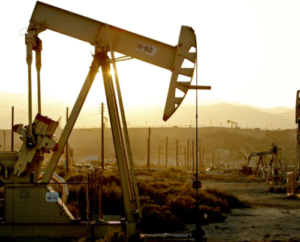$XOM $CVX $WTI
#BigOil #EnergyMarkets #OilPrices #FossilFuels #USPolitics #ShaleDrilling #TrumpPolicy #OilIndustry #EnergyPolicy #GasPrices #OilStocks #MarketVolatility
With just days remaining before U.S. President-elect Donald Trump begins his second term, the oil and gas industry is bracing to see how his energy policies will unfold. Among Trump’s top priorities is a resurgence of the “Drill, Baby, Drill” mantra, which seeks to bolster U.S. oil production, particularly from shale fields. Despite this confidence, skepticism looms over the feasibility of pushing private-sector shale operators, who already face thin profit margins and the risk of overproduction leading to market distortions. Additionally, the absence of a state-backed system like a national oil company (NOC) adds uncertainty, as the market-driven nature of U.S. energy companies means they will likely respond to broader price dynamics rather than political rhetoric.
The financial outlook for the energy sector remains muted heading into the new administration. Corporations such as ExxonMobil ($XOM) and Chevron ($CVX) have already issued profit warnings, citing volatile oil markets, high production costs, and ongoing concerns over global demand. These factors underscore the inherent challenges in scaling up shale output, as excessive drilling could trigger oversupply, driving oil prices further down. The West Texas Intermediate ($WTI) benchmark has struggled to maintain stability, with prices hovering within a volatile range due to fears of economic slowdown and fluctuating demand from key importers like China. Investors are watching closely, wondering whether Trump’s policy approaches can counter these headwinds or exacerbate them.
Global energy markets are not disconnected from geo-economic pressures, and Trump’s aggressive push for drilling might prompt retaliatory actions from other major producers like Saudi Arabia or Russia. Both nations have historically engaged in competitive market pricing strategies, particularly during times of U.S. expansion in oil exports. A potential price war could put further pressure on U.S. shale companies, which inherently have higher break-even costs compared to state-backed competitors in the Middle East and Asia. The emphasis on maximizing output, without parallel strategies to ensure market sustainability, could lead to an untenable scenario where short-term gains are overwhelmed by long-term financial instability for independent producers.
While advocates of aggressive drilling anticipate capitalizing on domestic production and creating jobs, the broader market dynamics cannot be ignored. Any surge in drilling will need to be balanced with the realities of demand elasticity and global trade flows. Moreover, as environmental concerns continue to influence both consumer preferences and investor movements, the prospect of expanding fossil fuel dependency will likely face resistance from ESG-focused funds. Such sentiments could lead to increased volatility for oil-related stocks and a growing divergence between political ambitions and market realities. For Trump’s drilling bonanza to succeed, it may require a more nuanced, market-adapted policy framework that ensures profitability while mitigating long-term risks.





Comments are closed.